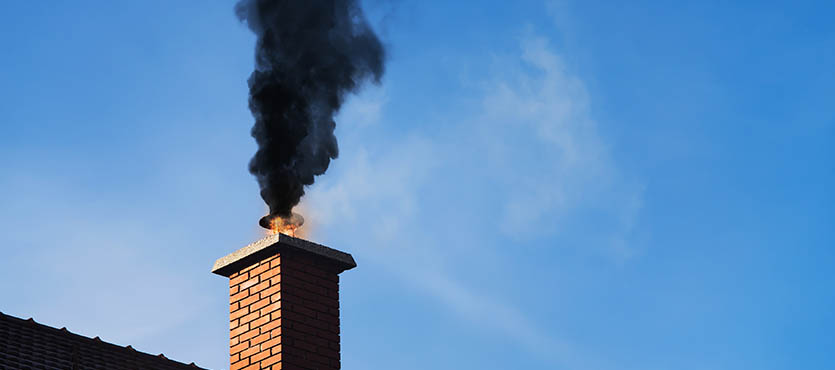Chimneys are useful and can provide many advantages to homeowners. A chimney can help your home be smoke-free and prevent kitchen fumes from spreading inside your house. It also reduces the heat that comes from cooking, and regulates the air that emits from burning wood that can be dangerous to your health.
Although they are not very common, chimney fires do happen. Fire that starts inside chimneys are dangerous as they can be fairly hard to detect. Knowing what to do before, during, and after a chimney fire can save your life and your property. Here are some tips and tricks on properly putting out a chimney fire.
Make Sure Everyone Gets Out Safe
First thing you must do after you notice any signs of chimney fire is to get everyone out of the house. Yes, you should prioritize everyone’s safety before taking any action to put out the fire. After everyone has got out safely, assess the situation properly, and look for any tools that can help you stop the fire such as a fire extinguisher or water hose.
Call the Fire Service Immediately
Once everyone is out, immediately call or ask a family member to contact the fire department to send you some help. Explain to them the situation properly so they understand the level of urgency. It is important that you don’t take the risk of trying to put out the fire by yourself if you don’t have experience in doing so. Even if you think that the fire is small, you must still call the fire service.
Close The Chimney’s Openings
If you catch the fire early on and it is safe to get near the chimney, you can try to close its openings – whether it’s in the fireplace or stove. By doing so, you can cut off the oxygen that helps the fire spread. Close the damper too if the flames haven’t spread to the fireplace yet. This is to avoid the smoke from spreading inside your home.
Control It With Water or Fire Extinguisher
Chimney fire usually starts in the flue lining where the creosote usually forms and thickens. Creosotes are tiny wood particles carried by smoke that do not get out of the chimney. They increase the risk of chimney fire as they are extremely flammable. When a fire starts inside your chimney, immediately get some water or if you have one, a fire extinguisher.
Alternatively, you may use sand, baking soda or salt to douse the flames. You may control the fire that spreads outside the chimney, but you should leave the work of putting it out to trained professionals. Hold out on taking any rash decisions until help reaches you.
How Do I Prevent Chimney Fire?
Chimney fire can be very dangerous, but much like other fire hazards, they are preventable. The creosote that builds up in the flue lining must be checked and cleaned periodically. Removing these highly combustible particles can lower the risk of chimney fires. It is a common misconception amongst people that chimney fires will put themselves out. Chimneys are designed to contain smoke, and not fire. A small fire can easily make cracks in the tile lining and spread to other parts of your house. Poor masonry can also become a catalyst in spreading the fire rapidly.
Aside from the creosote build-up, other blockages can also be a cause of chimney fire. Dried leaves, branches, and bird nests can fall in the opening of your chimney. Blockages are hard to notice and usually don’t become a problem until it’s too late. To avoid these issues, have a professional inspect and clean up your chimney at least once a year.
At Turnbull Masonry, we have over 19 years of experience in repairing old and deteriorating masonry which are the main causes of chimney fire. Our amazing team will go above and beyond to ensure that your house is safe from these hazards. If you think that your chimney is in urgent inspection or repair, contact our team today!

